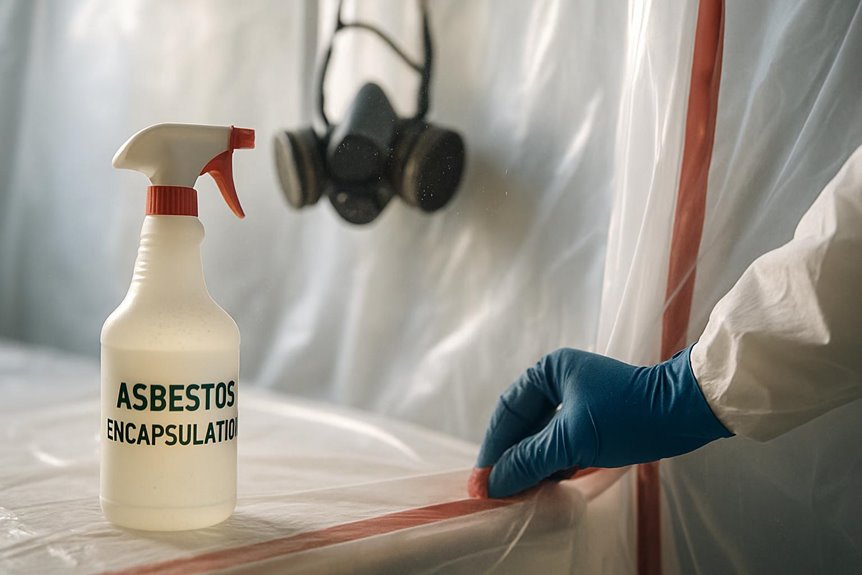In emergency situations where asbestos exposure is a concern, it is essential to act swiftly and methodically. Identifying the risks is the first step, followed by ensuring the safety of all individuals in the vicinity. Proper evacuation procedures and protective measures are vital. Once the area is secured, contacting certified professionals becomes imperative for safe removal. Understanding these steps can greatly reduce health risks, but what comes next in this critical process?
Key Takeaways
- Identify and assess potential asbestos-containing materials quickly to determine the risk of exposure.
- Evacuate the area immediately, ensuring safety for all individuals nearby.
- Use appropriate personal protective equipment (PPE) to minimize exposure during any emergency response.
- Contact certified professionals for safe and effective asbestos removal and management.
- Document the incident and removal process for future reference and regulatory compliance.
Assessing the Situation and Identifying Asbestos Risks
How can homeowners effectively assess the presence of asbestos in their properties?
The process begins with identifying asbestos-containing materials, which may include insulation, floor tiles, and roofing. Homeowners should familiarize themselves with the common signs and characteristics of these materials.
Conducting a thorough risk assessment is also essential; this involves evaluating the condition of potential asbestos materials and determining the likelihood of fiber release. If any materials appear damaged or disturbed, they may pose a higher risk.
It is often advisable to consult with a certified professional for accurate testing and analysis.
Ensuring Safety and Evacuating the Area
Ensuring safety during asbestos removal is paramount for homeowners and anyone in the vicinity of the work area. Adhering to established emergency protocols is essential to mitigate risks associated with asbestos exposure.
The first step involves promptly evaluating the situation to determine the extent of contamination. Once identified, it is vital to initiate evacuation procedures, ensuring that all individuals leave the area quickly and safely. Designated evacuation routes should be clear and well-marked, allowing for an efficient exit.
Homeowners should communicate with nearby residents about the situation, encouraging them to stay clear until the area has been declared safe. Additionally, it is crucial to wear proper personal protective equipment during the removal process to minimize exposure risks. Following these steps will help create a safer environment, preserving the freedom and well-being of everyone affected by the emergency.
After confirming the area is evacuated and the immediate risks are mitigated, the next step involves contacting professionals for safe removal and cleanup of asbestos.
Hiring experts trained in asbestos management is vital for guaranteeing safety and compliance with regulations. These professionals possess the knowledge and skills necessary to utilize effective removal techniques, which minimize the risk of exposure and guarantee thorough cleanup.
It is essential to choose a licensed asbestos abatement company that follows industry standards and protocols. Their expertise not only protects individuals but also promotes a healthier environment.
Frequently Asked Questions
How Can I Tell if My Home Contains Asbestos?
To determine if a home contains asbestos, one should consider asbestos testing methods, such as sampling materials and lab analysis. Additionally, understanding asbestos risk factors, like age and renovation history, will aid in assessment.
What Symptoms Indicate Asbestos Exposure?
Asbestos symptoms may include persistent cough, shortness of breath, chest pain, and fatigue. Exposure signs can also manifest through unexpected weight loss or respiratory issues. Awareness of these indicators is essential for early diagnosis and treatment.
Can I Remove Asbestos Myself?
When considering asbestos removal, DIY safety is paramount. While individuals may be tempted to undertake the task themselves, professional assistance is highly recommended due to health risks and strict regulations surrounding asbestos handling and disposal.
What Should I Wear During Asbestos Removal?
When handling asbestos, individuals should wear appropriate protective gear, including respirators, gloves, and disposable coveralls. This guarantees safe handling and minimizes exposure to harmful fibers, promoting a safer environment during the removal process.
How Is Asbestos Disposed of Safely?
Asbestos disposal must adhere to strict asbestos regulations, ensuring safe disposal methods. Professionals should encapsulate materials, transport them in sealed containers, and deliver them to licensed facilities, protecting the public and environment from harmful exposure.
Conclusion
To summarize, addressing asbestos exposure in emergencies requires swift action and careful planning. By evaluating the situation, guaranteeing the safety of all individuals, and promptly contacting certified professionals, the risks associated with asbestos can be effectively managed. Implementing these recommended procedures not only protects health but also guarantees compliance with safety regulations. Prioritizing safety and expert assistance is essential for a successful response to any potential asbestos-related emergency.

